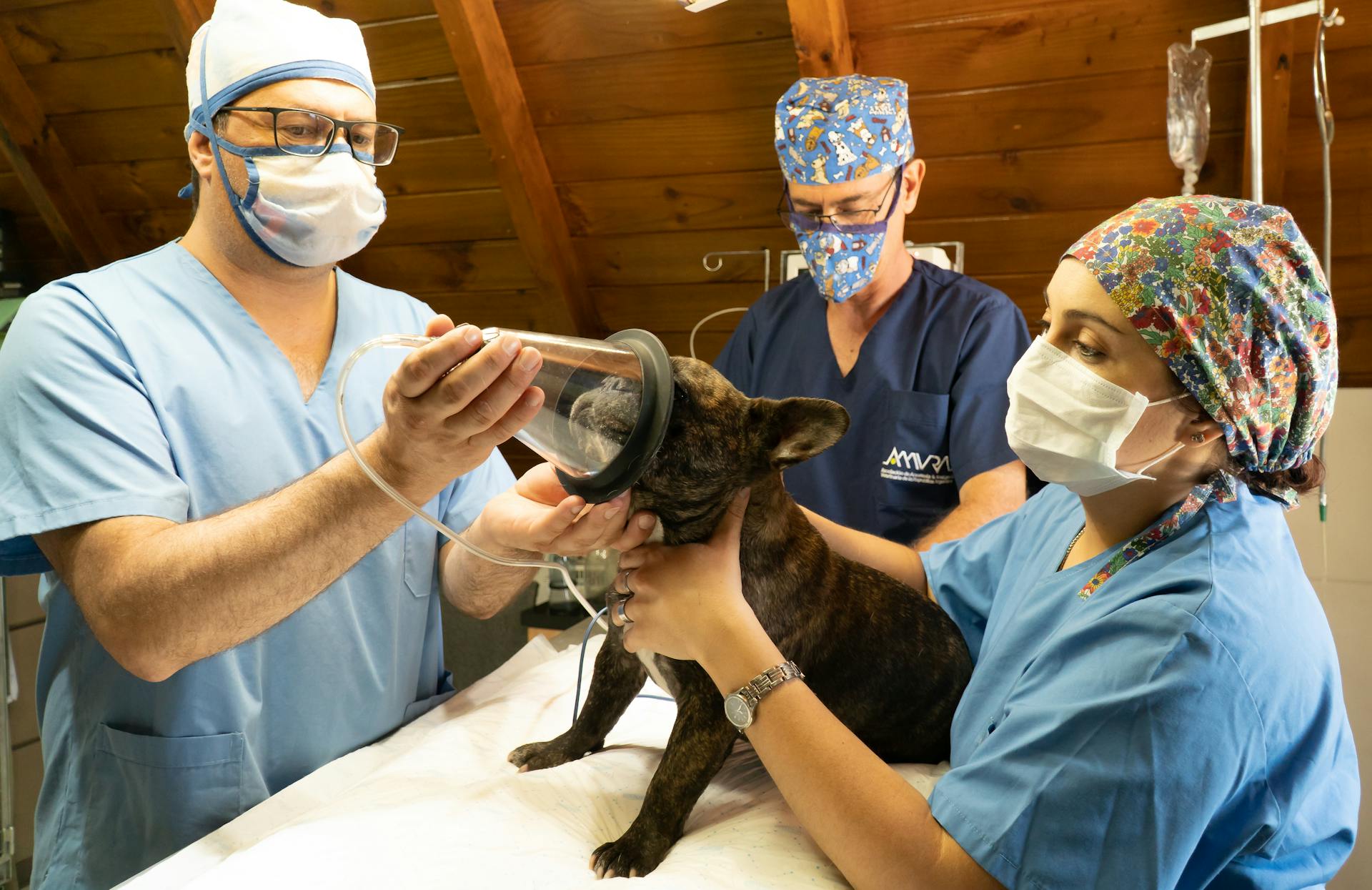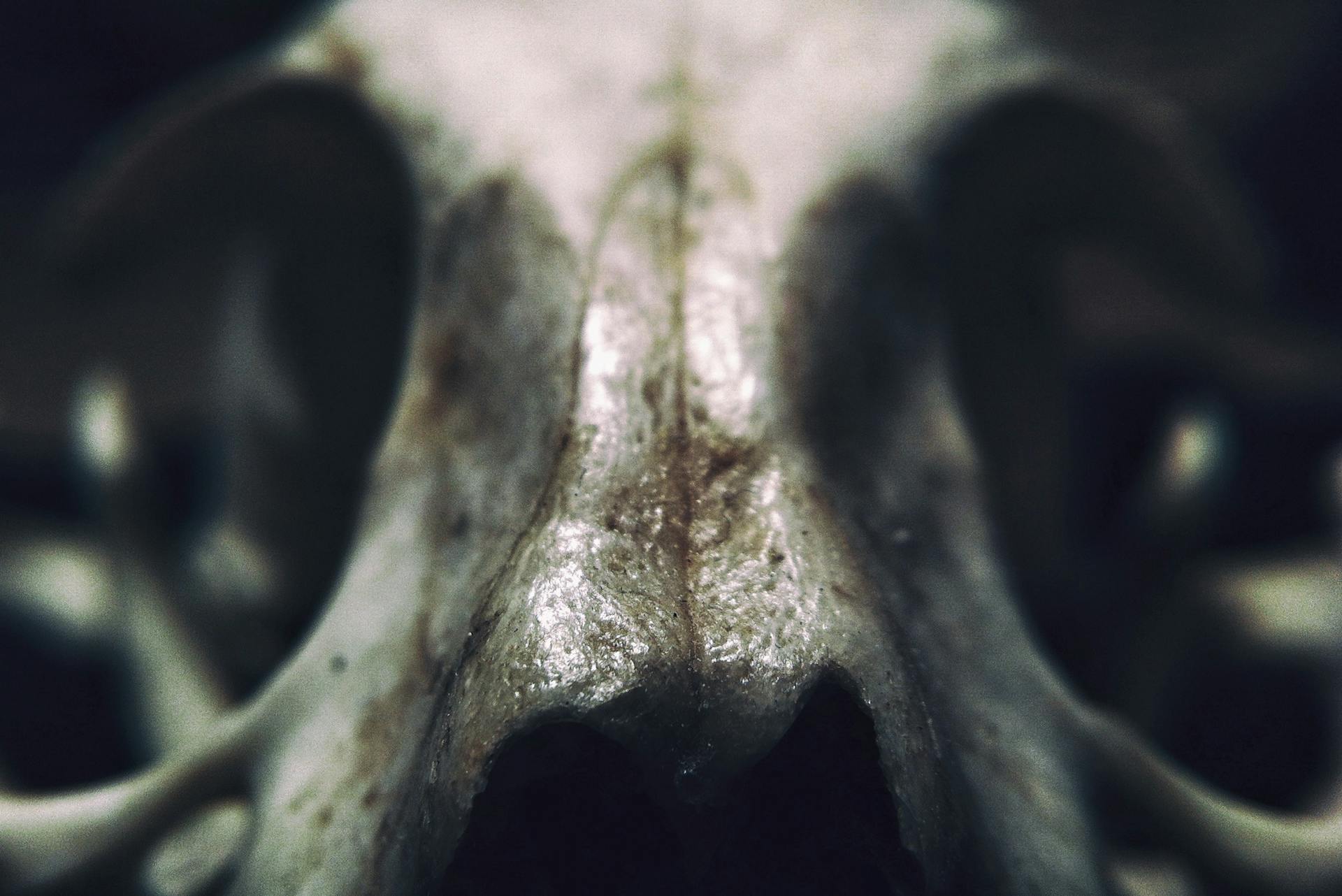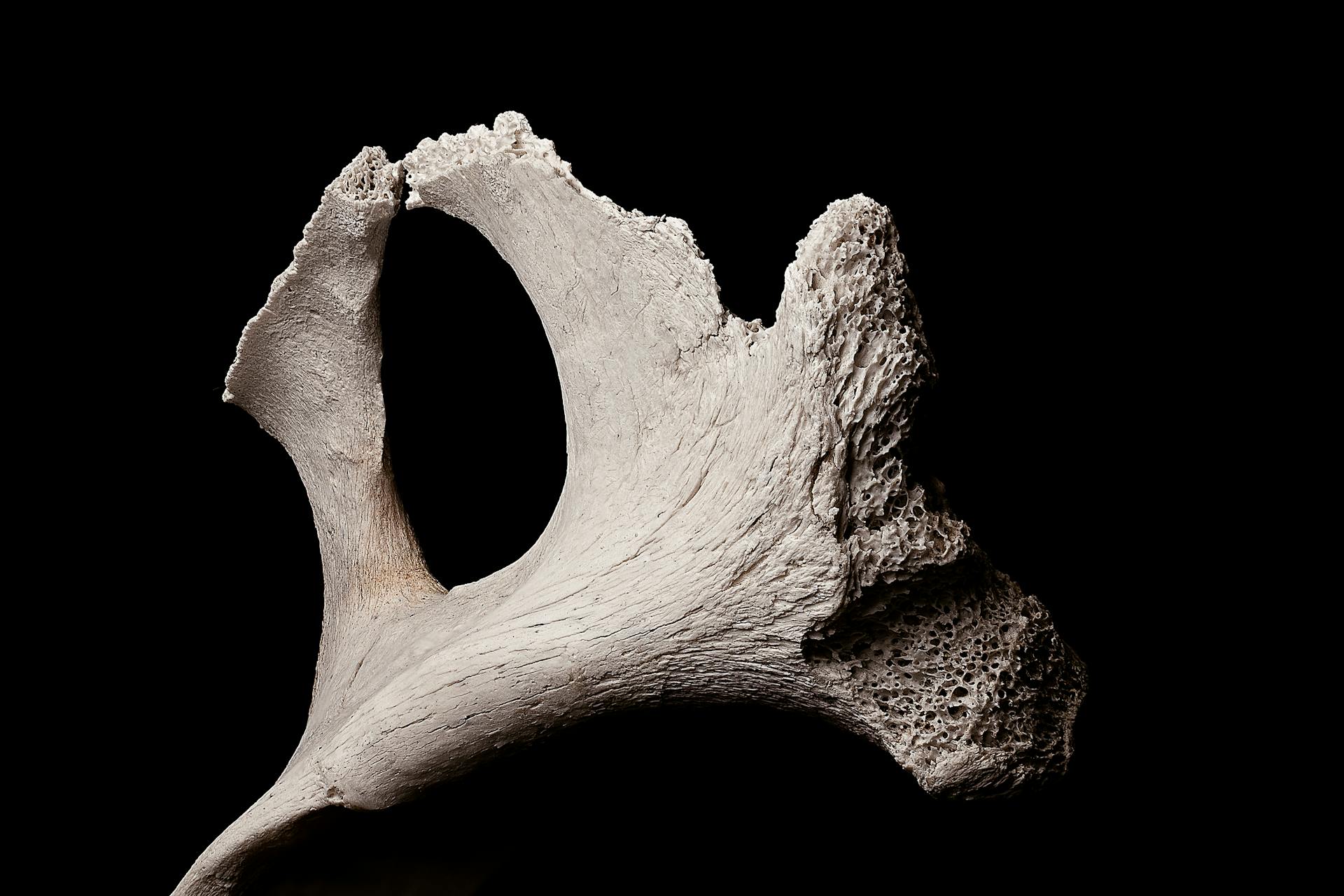
Exposed bone in the mouth can be a painful and concerning issue, but understanding its causes and risks can help you take proactive steps to prevent it.
The most common cause of exposed bone in the mouth is gum recession, which can be caused by aggressive tooth brushing or gum disease.
Gum recession can lead to exposed roots, making teeth more sensitive and prone to decay.
Symptoms of exposed bone in the mouth include visible roots, sensitivity to hot or cold foods and drinks, and a change in the way teeth fit together when biting or chewing.
Exposed bone in the mouth can also be a sign of underlying health issues, such as vitamin deficiencies or autoimmune disorders.
Take a look at this: Black Mouth Cur Teeth
What Is Osteonecrosis?
Osteonecrosis of the jaw, or ONJ, is a rare but serious condition that causes bone cells in your jawbone to die.
The medical term for bone death is osteonecrosis, which literally means "bone death" – "oste" refers to bone and "necrosis" means death.
ONJ is also known as avascular necrosis, which means that something slows or stops blood flow to your jawbone tissue, causing it to start dying.
Bone death is a gradual process that can lead to a variety of complications.
Causes and Risk Factors
Exposed bone in the mouth can be a serious issue, and understanding its causes and risk factors is crucial for prevention and treatment.
Certain medications, such as bisphosphonates, can disrupt natural bone healing and lead to conditions like osteonecrosis of the jaw (ONJ). These medications are often prescribed for osteoporosis and certain types of cancer, but they can also cause ONJ.
People who receive IV bisphosphonates have a higher risk of developing ONJ compared to those who take lower-dose oral antiresorptive medicines for osteoporosis.
Other risk factors for ONJ include being 65 or older, having diabetes, gum disease, or a history of facial trauma. Smoking and wearing dentures can also increase the risk of ONJ.
Here are some of the significant causes and risk factors associated with ONJ:
- Medications, such as bisphosphonates and monoclonal antibodies
- Dental procedures and surgeries, especially those involving the jawbone
- Cancer treatment and related medications, particularly those involving high-dose intravenous antiresorptive medications
- Poor oral health, including chronic dental conditions like periodontal disease
- Age and general health conditions, such as diabetes and anemia
- Bad habits and lifestyle factors, including smoking and heavy alcohol consumption
What Causesjaw?
Osteonecrosis of the jaw can occur after oral surgery, such as a tooth removal, dental implant, or dental bone graft, that leaves some of your jawbone exposed.
Your gum tissue may not heal properly after surgery, leaving your jawbone exposed and without blood flow.
This can cause your bone cells to die, leading to osteonecrosis of the jaw.
ONJ can also occur for no apparent reason, although this is rare.
It's essential to be aware of the potential risks associated with oral surgery to take preventative measures and seek medical attention if you experience any symptoms.
ONJ Risk Factors
ONJ can affect anyone, but certain factors increase your risk. Being 65 or older is one of them.
Medications like bisphosphonates, which slow bone loss and increase bone strength, are also a risk factor. These medications are often prescribed to prevent bone fractures, especially in cancer patients.
Chemotherapy, diabetes, and long-term use of corticosteroids can also increase your risk of ONJ. Facial fracture or trauma, gum disease, and shingles are other contributing factors.
Smoking and wearing dentures are also linked to an increased risk of ONJ. Heavy alcohol consumption and poor nutrition can further compromise your body's healing mechanisms, making you more susceptible to ONJ.
Here are some specific risk factors to be aware of:
- Bisphosphonates and other antiresorptive medications
- Chemotherapy
- Diabetes
- Facial fracture or trauma
- Gum disease (periodontal disease)
- Long-term use of corticosteroids
- Shingles
- Smoking
- Wearing dentures
It's essential to discuss your risk factors with your doctor or dentist to determine the best course of action to prevent ONJ.
Symptoms and Diagnosis
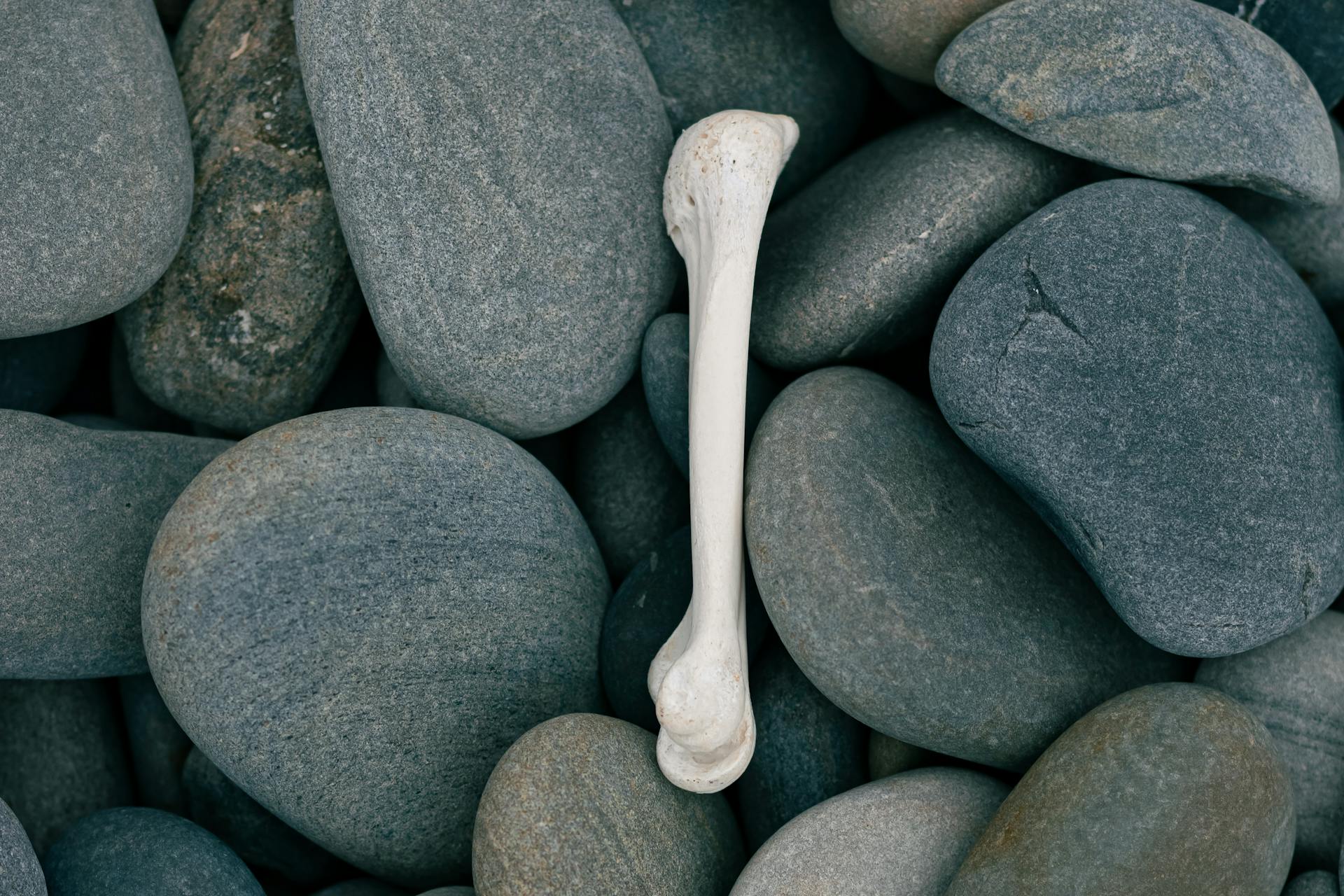
Exposed bone in the mouth can be quite painful and uncomfortable. Exposed bone in the gum after tooth extraction is usually painful, with symptoms including dull pain at the site of the extraction, redness of the area, and excessive swelling.
A sharp sensation in the gum tissue can also occur. The early signs of an infection, which could include pus and inflammation, are also potential symptoms.
If you're experiencing exposed bone, it's essential to get in touch with your dentist to check the extraction site and make a diagnosis. Early intervention can lead to more effective treatment and a faster recovery.
Here are some common symptoms of osteonecrosis of the jaw (ONJ), which can be a cause of exposed bone in the mouth:
- Loose Teeth: If your teeth feel increasingly loose, it may be a sign of ONJ.
- Poor Healing: Noticing poor or slow healing after dental surgery or tooth extraction could signal ONJ.
- Exposed Bone: Exposed bone that persists for more than eight weeks is a clear-cut warning sign of ONJ.
Keep in mind that early detection and treatment of ONJ can lead to faster diagnosis and more effective treatment, reducing possible complications.
What Are the Symptoms of
If you're experiencing symptoms of jaw osteonecrosis, it's essential to know what to look out for. Pain on the side of your mouth where a recent dental procedure took place can be a sign of ONJ.
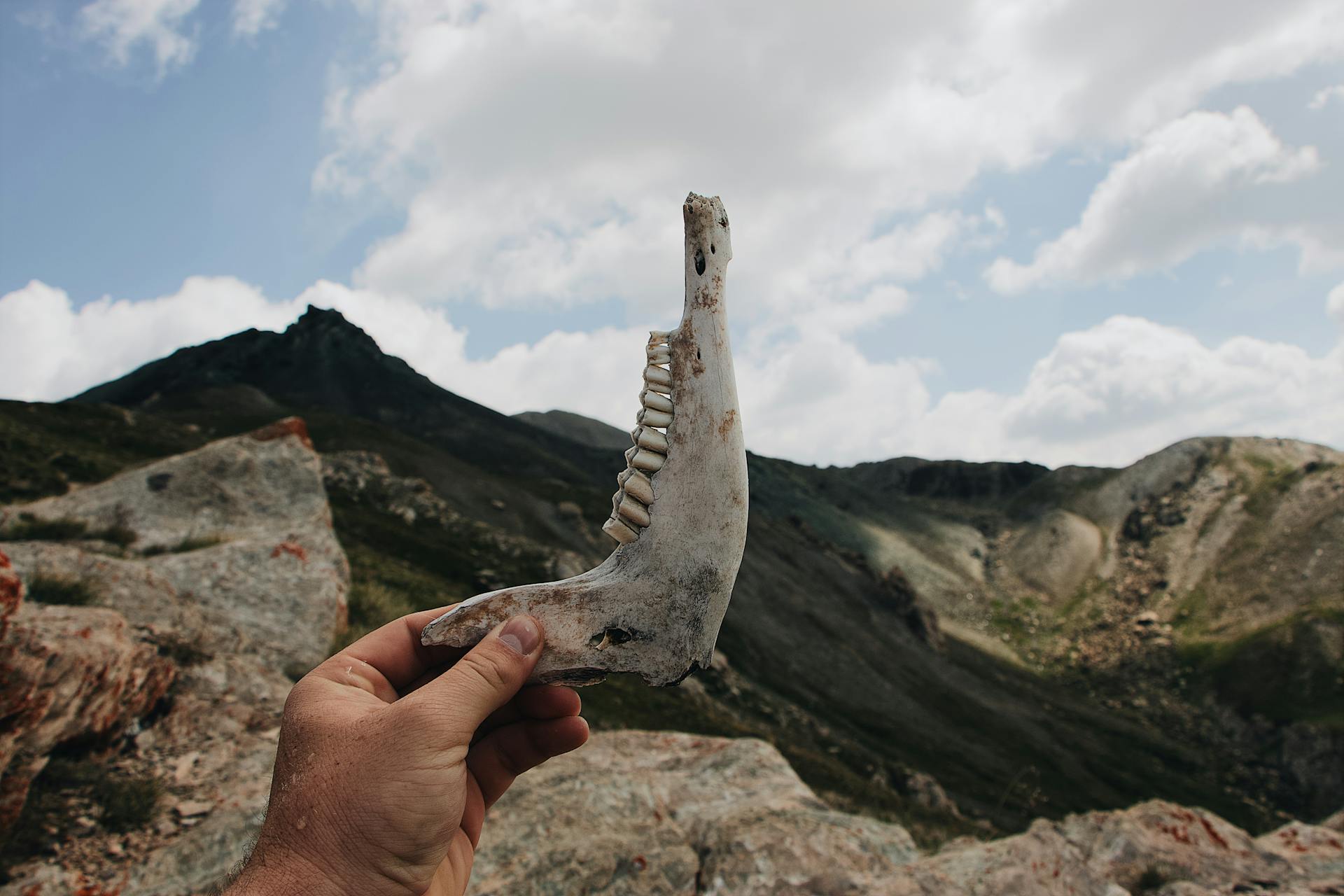
Loose teeth are another possible symptom, especially if there's no apparent cause like an accident or gum disease. You might also notice poor healing after dental surgery or tooth extraction, which could signal a greater issue.
A numb or heavy feeling in your jaw can be a chronic symptom of ONJ, requiring you to constantly check it. Exposed bone is a clear-cut warning sign, usually lasting more than eight weeks.
Chronic or recurrent jaw infections can be an early symptom of ONJ, with signs including pus discharge, foul taste, or bad breath. Persistent or worsening pain in the jaw or mouth can also be an ONJ symptom.
Here are the common symptoms of ONJ:
- Jaw pain
- Loose teeth
- Mouth sores
- Pus-like discharge in your gums and mouth
- Swollen gums
If you're experiencing any of these symptoms, it's crucial to see your dentist as soon as possible. Early diagnosis and treatment can lead to faster healing and prevent potential complications.
Osteoradionecrosis
Osteoradionecrosis is a rare but serious complication of radiation therapy in patients with head and neck cancer.
It's defined as an area of exposed, irradiated bone that doesn't heal for more than three months, with no signs of a primary tumor, recurrence, or metastasis.
Osteoradionecrosis can be a devastating condition, leading to chronic pain, infection, and disfigurement.
If you or a loved one is undergoing radiation therapy, it's essential to be aware of the risks and take proactive steps to prevent osteoradionecrosis.
Here are some key causes and risk factors to consider:
- Medications: Certain antiresorptive drugs, such as bisphosphonates and monoclonal antibodies, can disrupt natural bone healing and lead to osteoradionecrosis.
- Dental Procedures and Surgeries: Any surgical intervention that distorts the jaw bone can lead to poor healing scenarios and increase the risk of osteoradionecrosis.
- Cancer Treatment and Related Medications: Patients undergoing intense cancer treatment regimens, particularly breast cancer and solid tumors, are at a heightened risk of developing osteoradionecrosis.
- Poor Oral Health: Chronic dental conditions like periodontal disease and dental infection can contribute to the development of osteoradionecrosis.
It's crucial to maintain good oral health and inform your healthcare team about any dental conditions or procedures you've undergone.
Stages and Treatment
Exposing bone in your mouth can be a painful and uncomfortable experience, but the good news is that it can be treated with the right care. If you have Stage 0 osteonecrosis of the jaw, your healthcare provider may recommend antibiotics, antiseptic mouth rinse, and pain relievers to ease symptoms.
Stages of osteonecrosis of the jaw (ONJ) range from Stage 0, where your healthcare provider may watch for changes, to Stage 3, where surgery is required to remove dead jawbone. The stage of ONJ you have will determine the course of treatment.
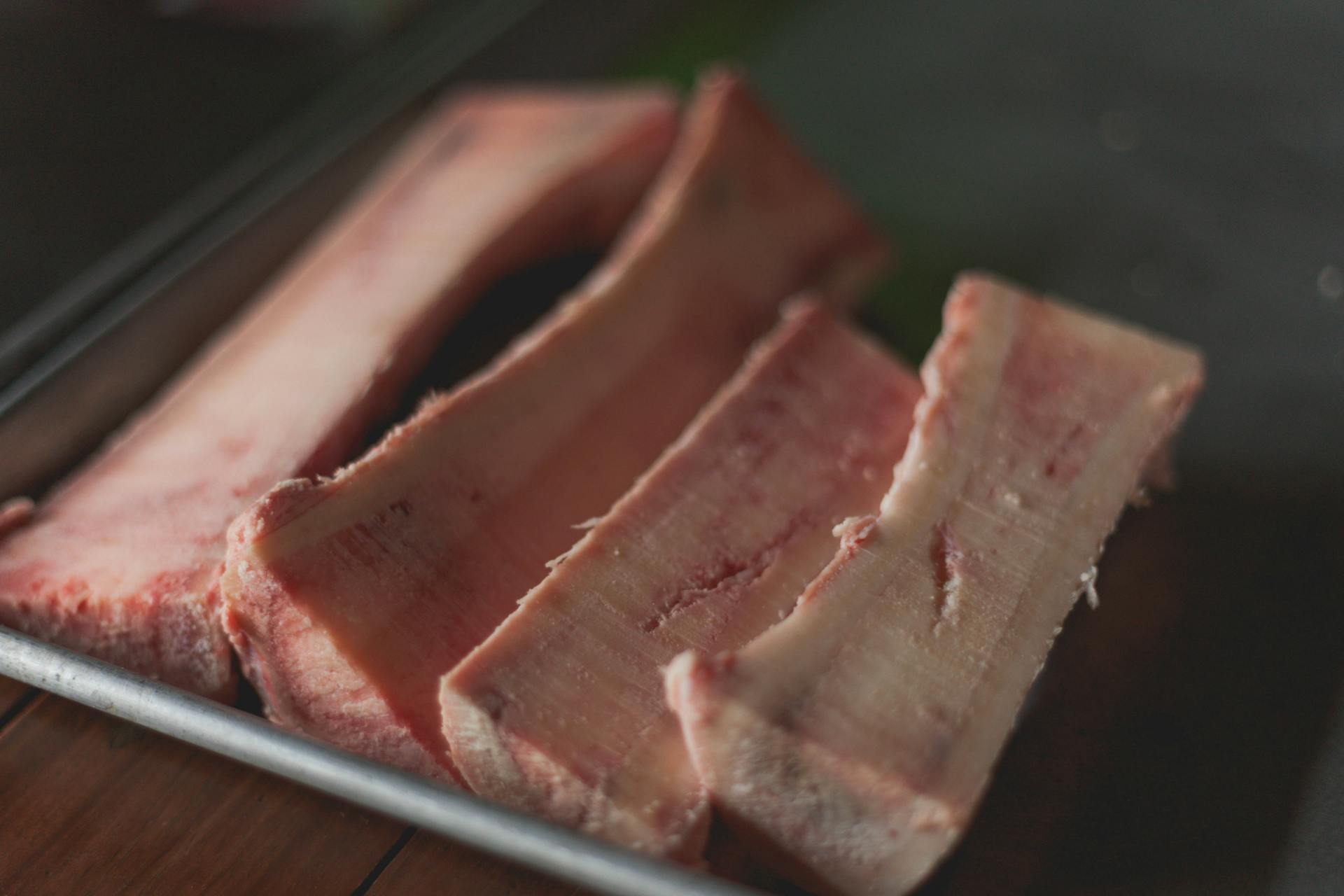
The treatment options for exposed bone in your mouth vary depending on the stage of ONJ and the severity of the exposed bone. If you have Stage 1 ONJ, your healthcare provider may perform debridement, scraping away exposed dead bone cells, and prescribe antibiotics and pain medication. For Stage 2 and Stage 3 ONJ, surgery is required to remove dead jawbone and any affected tissue.
Here's a summary of the treatment options for exposed bone in your mouth:
It's essential to visit your dentist as soon as possible if you think you have exposed bone after a tooth extraction to avoid any future complications.
What Are the Stages of
The stages of a condition can be confusing, but understanding them is key to proper treatment.
There are several stages to a condition, including the prodromal stage, where symptoms start to appear but are often mild and nonspecific.
The prodromal stage can last from several weeks to several months, during which time the individual may experience symptoms such as fatigue, mood swings, and difficulty sleeping.
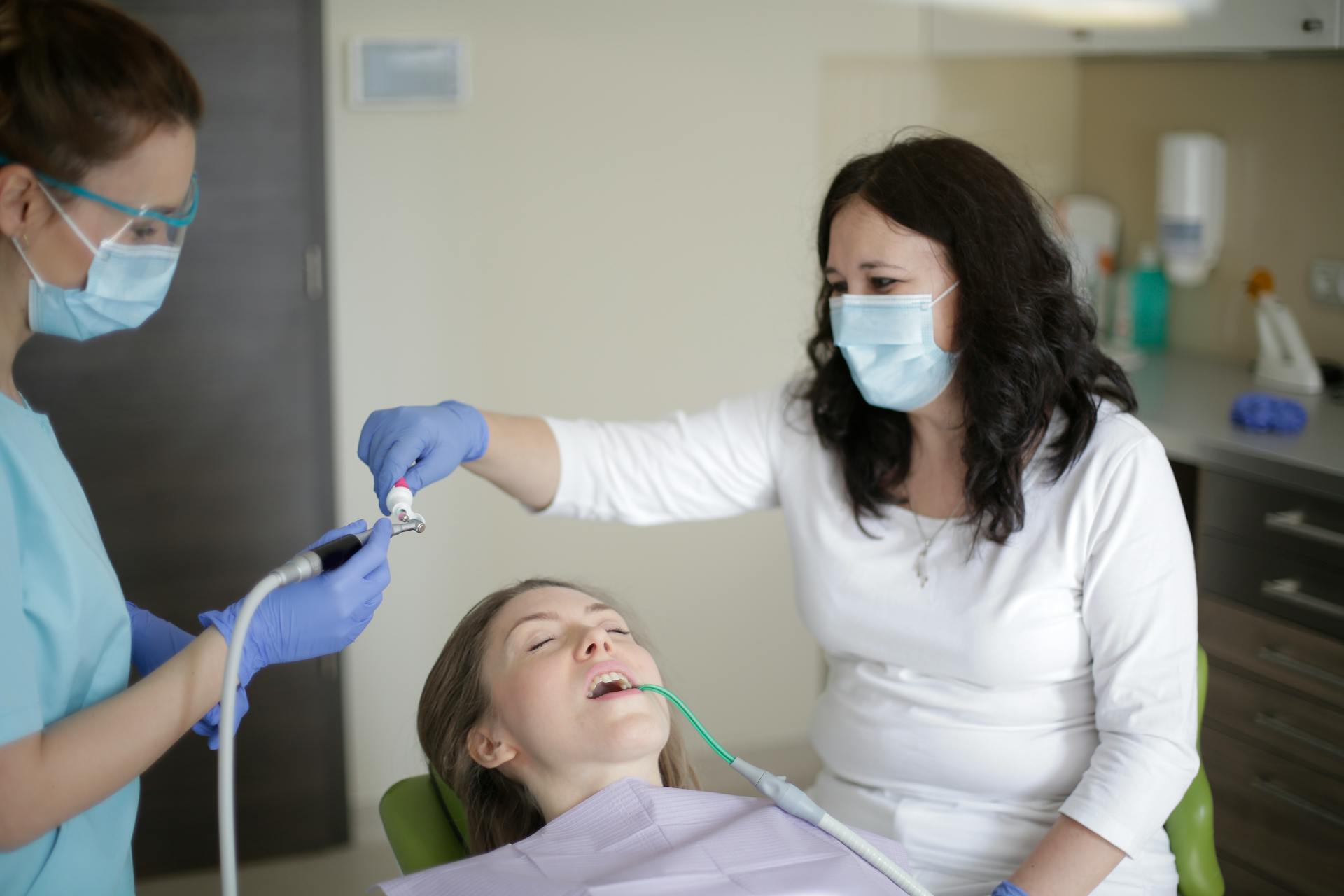
In the active stage, symptoms become more pronounced and can include physical symptoms like tremors and cognitive symptoms like memory loss.
The active stage can last for several years, and during this time, the individual may experience a range of symptoms that can impact daily life.
In the remission stage, symptoms subside, and the individual may experience a period of relief from symptoms.
However, even in the remission stage, the individual may still experience some symptoms or have a higher risk of relapse.
ONJ Treatments
For Stage 0 ONJ, your healthcare provider may watch for changes and recommend antibiotics, antiseptic mouth rinse, and pain relievers to ease symptoms.
In some cases, the exposed bone after tooth extraction can be managed by letting it work its way out naturally with saline rinses over several weeks or months.
Manual or surgical removal of the exposed bone is also an option, depending on its size and location.
Explore further: Why Does My Fish Keep Opening and Closing Its Mouth?
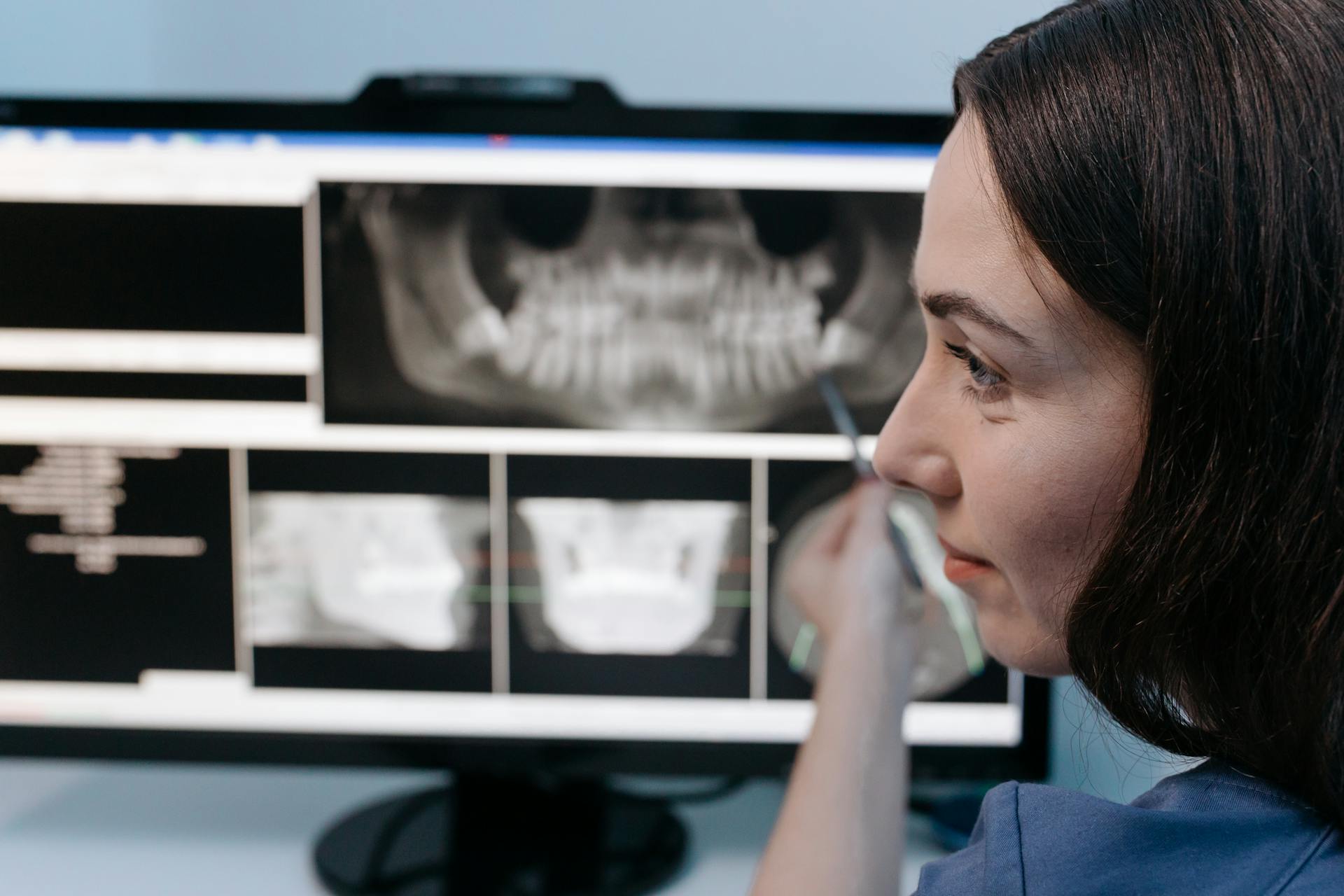
Medication is a cornerstone in managing ONJ symptoms and conditions, including oral antibiotics, pain medications, and antiseptic mouth rinses.
Conservative treatment is often used in the early stages of ONJ or for patients with complicating health factors, focusing on maintaining oral hygiene, managing discomfort, and avoiding further invasive dental procedures.
Surgical intervention may be required in advanced stages of ONJ, involving debriding or removing the dead bone in the jaw to encourage healing.
The following treatment options are available for ONJ:
- Medication
- Conservative treatment
- Surgical intervention
- Application of growth factors
- Hyperbaric oxygen therapy (HBOT)
- Teriparatide therapy
Your healthcare provider may scrape or scrub away the exposed dead bone cells (debridement) to prevent more bone loss and help your gums to heal over your bone.
Surgery to remove the section of dead jawbone and any tooth that touches that section of your jaw may be necessary for Stage 2 and Stage 3 ONJ.
Sinus surgery may be required to remove dead bone that extends into your nasal passages in Stage 3 ONJ.
A dentist can manually remove an exposed bone spicule, but minor surgery may be required if the bone is big or causing problems in the jawline or gums.
Prevention and Outlook
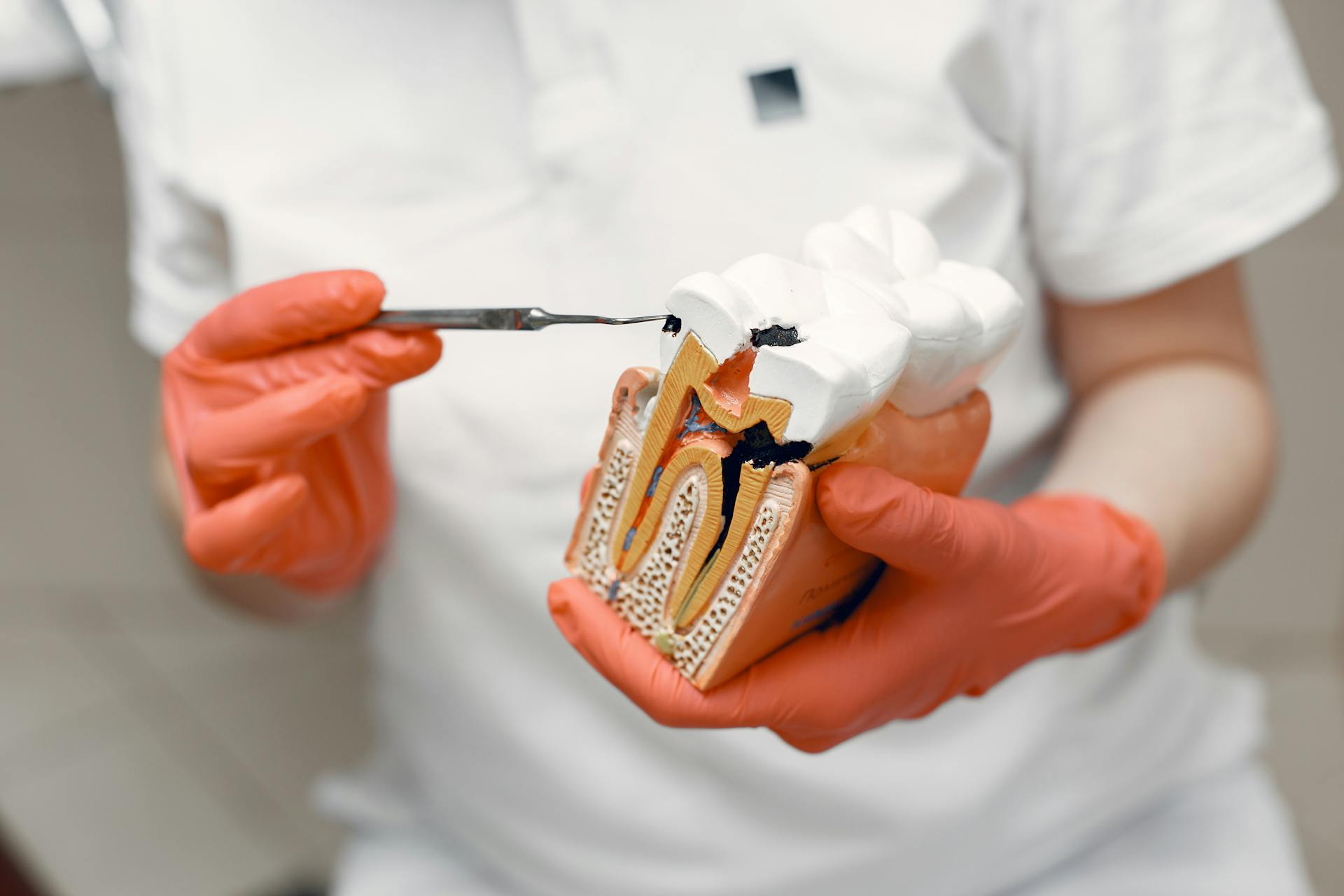
Practicing good oral hygiene is crucial to prevent exposed bone in the mouth. This includes daily brushing and flossing.
Regular dental check-ups can also help identify any potential issues. Your dentist or oral surgeon should be informed if you're receiving antiresorptive medications.
They may be able to treat your dental issue with less invasive procedures, such as a root canal instead of a tooth extraction.
Preventing the Condition
Practicing good oral hygiene is crucial to prevent osteonecrosis of the jaw (ONJ). This means brushing your teeth daily and flossing regularly.
Regular dental check-ups are also essential, especially if you're taking medications like bisphosphonates or undergoing cancer treatment. Your dentist can monitor your oral health and spot any potential problems early.
Maintaining good oral hygiene can help prevent infections and other conditions that might contribute to ONJ. Brushing and flossing daily can make a big difference.
If you need to have a tooth removed, your dentist may recommend a root canal instead of an extraction. This can help reduce the risk of ONJ.
Related reading: Is Bone Broth Good for Dogs with Pancreatitis
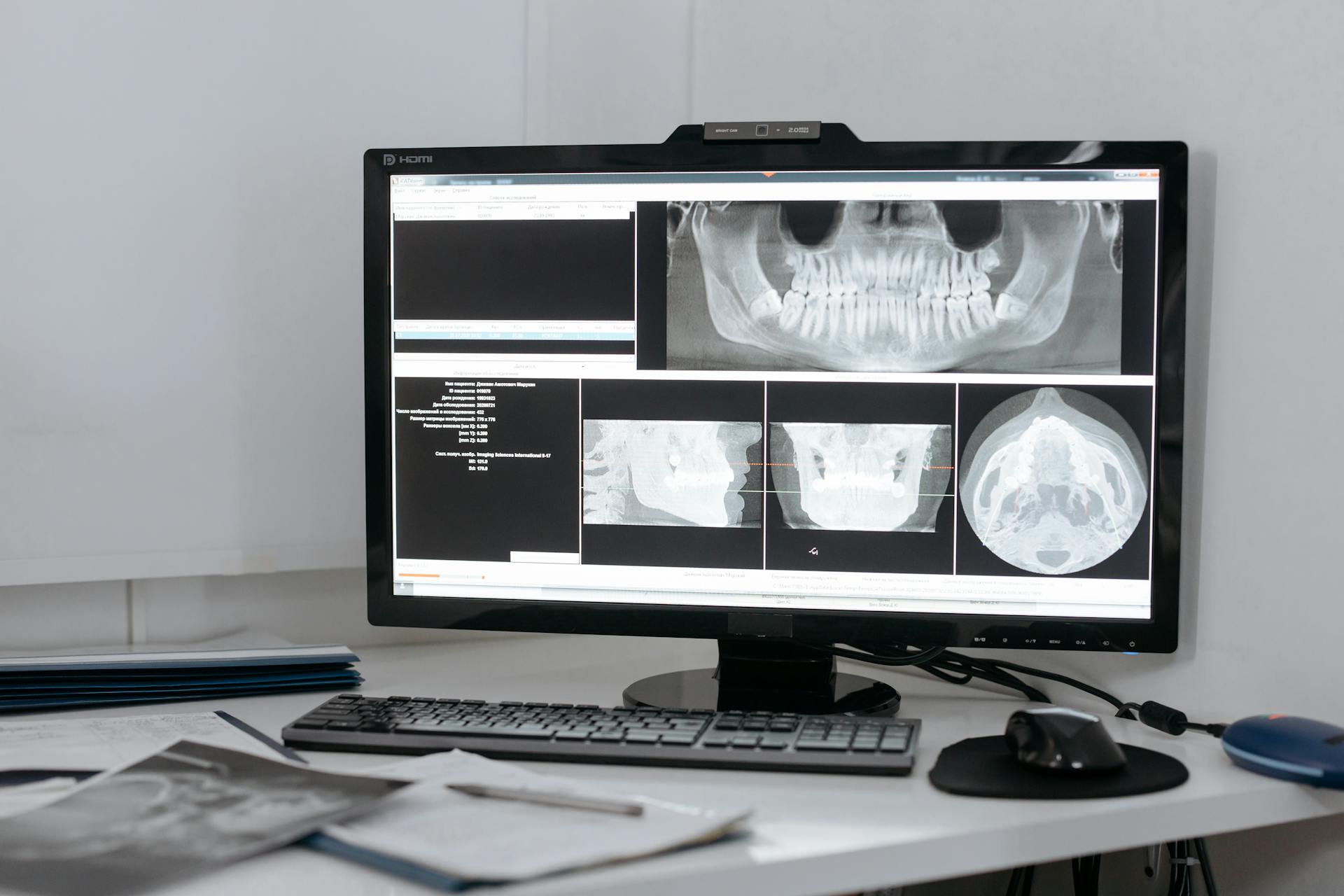
Here are some preventive dental care measures that can help manage and prevent ONJ:
- Regular dental check-ups
- Good oral hygiene (brushing and flossing daily)
- Avoiding invasive dental procedures (if possible)
- Pre-treatment dental assessment for patients at high risk of ONJ
- Education on the signs of ONJ and seeking immediate care if symptoms occur
- Regular reviews of the condition of the oral cavity in high-risk patients
Someone's Outlook
If you've been diagnosed with osteonecrosis of the jaw, it's essential to know the outlook for someone in your situation. Early detection and treatment can keep ONJ from getting worse and helps preserve your jawbone.
Most people with early stages of ONJ get better with nonsurgical treatments. You can take steps to prevent the condition from worsening by following your doctor's advice and attending regular check-ups.
Once the condition worsens, you're at risk of losing sections of your jawbone, as well as some of your teeth. This can have a significant impact on your daily life and may require more extensive treatment or even surgery.
Definitions and Pathophysiology
Exposed bone in the mouth can be a painful and potentially serious condition. It's known as Medication-Related Osteonecrosis of the Jaw, or MRONJ for short.
The exact mechanism of MRONJ is still unknown, but it's thought to be a combination of factors, including the interaction of certain medications with the presence of bacteria in the mouth and local trauma.

Bisphosphonates, a type of medication often prescribed to treat osteoporosis, are a major contributor to MRONJ. They work by inhibiting the activity of osteoclasts, which are cells that break down bone tissue.
In addition to bisphosphonates, other medications like denosumab can also increase the risk of MRONJ. These medications can affect not only osteoclasts but also other cells, such as osteoblasts, fibroblasts, and keratinocytes.
The pH value of the bone is also an important factor in the development of MRONJ. When the pH is low, bisphosphonates are released and activated, which can lead to the inhibition of osteoclast activity and the death of other cells.
The risk of MRONJ is higher in certain groups of people, such as cancer patients who take oral antiresorptive medications. In fact, cancer patients who take denosumab have a risk of MRONJ of less than 5%, while osteoporotic patients treated with oral bisphosphonates have a risk of less than 0.05%.
Curious to learn more? Check out: Canine Bone Cancer Life Expectancy
Difference Between Osteomyelitis
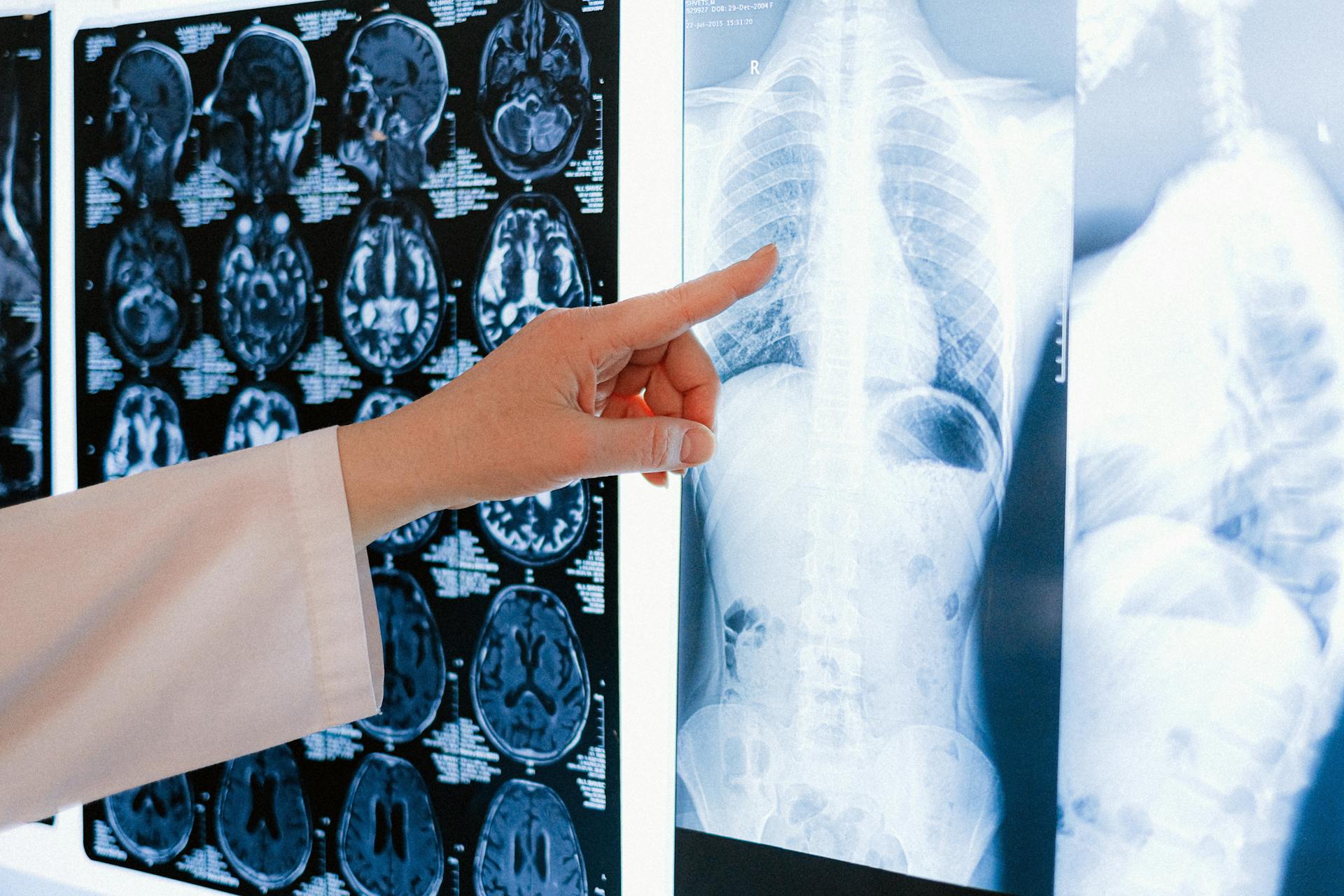
Osteomyelitis is a type of bone infection caused by bacteria or fungi.
A key difference between osteomyelitis and osteonecrosis of the jaw (ONJ) is that osteomyelitis often causes a fever.
Osteomyelitis is diagnosed using blood tests to check for signs of infection.
Is the Same?
Osteonecrosis of the jaw and osteoradionecrosis are not the same thing. Osteoradionecrosis occurs in 3% to 10% of people who receive radiation therapy for head and neck cancers.
Radiation therapy can destroy blood vessels that carry blood to your bones, leading to bone death. A tooth extraction or other invasive dental procedure after radiation therapy increases your chances of developing osteoradionecrosis.
This is a serious concern for people undergoing radiation therapy for head and neck cancers.
For your interest: Dogs Eat Beef Neck Bones
2.1.1 Pathophysiology
The exact mechanism of MRONJ is still unknown, but it's believed to be a combination of the interaction of drugs with the presence of microbiological contamination of a certain area, as well as local trauma.

Antiresorptive drugs, which are commonly prescribed to stabilize bone loss caused by osteoporosis, are thought to play a key role in the development of MRONJ. These drugs inhibit the differentiation and function of osteoclasts, leading to their apoptosis and a decrease in bone resorption and remodeling.
Bisphosphonates, a type of antiresorptive drug, negatively affect the biological activity of osteoblasts, fibroblasts, and keratinocytes, which can lead to bone exposure and impaired healing.
The death of fibroblasts, especially in oral epithelial cells, is a significant factor in the development of osteonecrosis, which is a key component of MRONJ.
Inflammation at the site of origin, caused by bacterial contamination, also plays a key role in the pathogenesis of osteonecrosis.
Bisphosphonates increase the adhesion of bacteria to hydroxylapatite in the bone, leading to necrosis and avascularization.
Tooth extraction or advanced periodontal disease are the most common causes of osteonecrosis, while in 30% of cases, MRONJ develops spontaneously.
The pH value is an important factor in the formation of MRONJ, as low pH values can activate bisphosphonates to bind to osteoclasts and inhibit their activity.
Cancer patients who take oral antiresorptive medications have a greater risk for the development of MRONJ than osteoporotic or osteopenic patients.
Zolendronate and denosumab are the drugs most frequently associated with MRONJ, with a cumulative risk of less than 5% for cancer patients treated with zolendronate and a similar risk for denosumab.
Consider reading: Canine Mouth Cancer Life Expectancy
2.1.7. Therapy
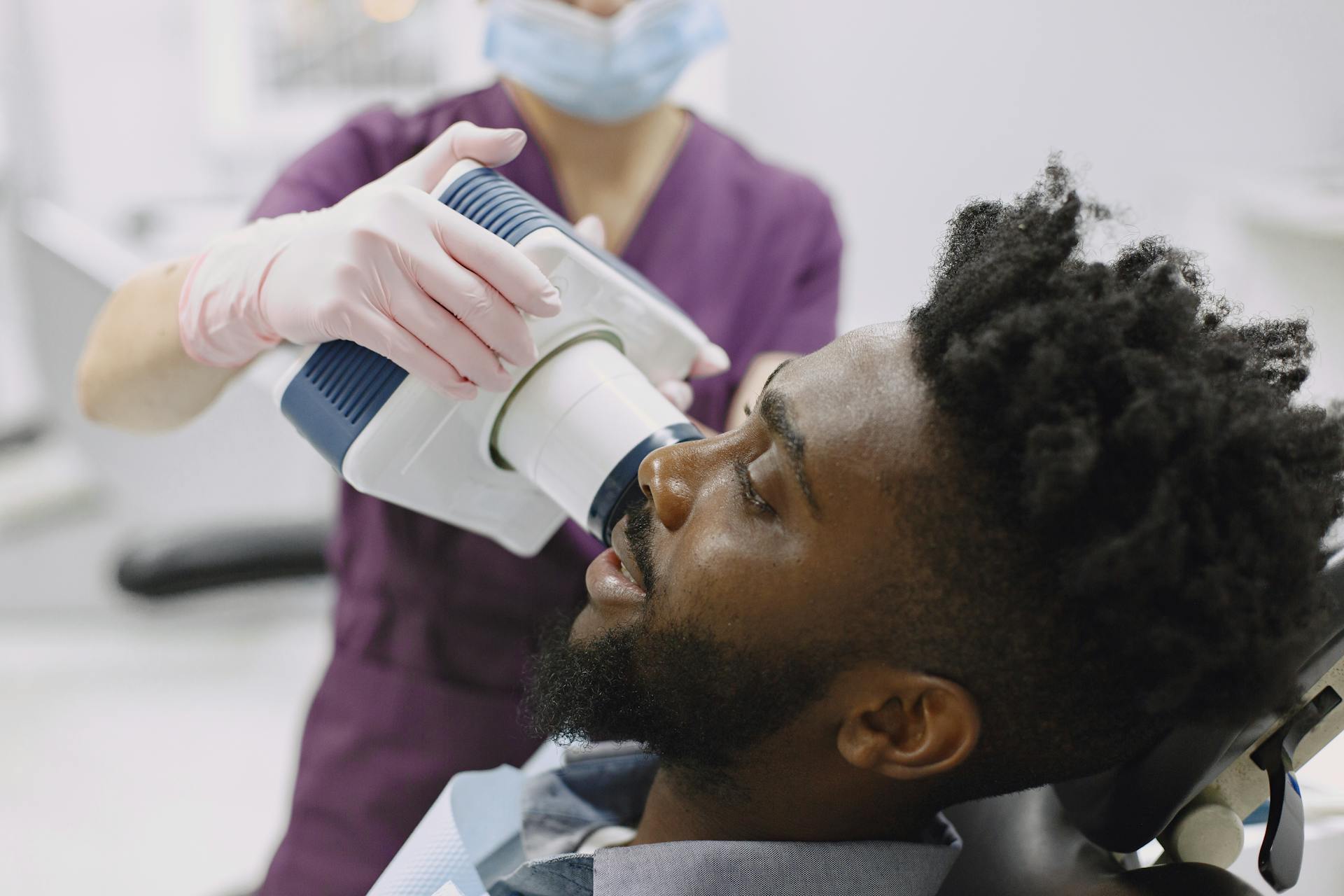
Therapy for osteoradionecrosis depends on the stage of the disease.
Conservative treatment is used for the first and second stages, and it includes improved oral hygiene measures, antibiotics, and analgesics. Ultrasound is also used as a conservative treatment, with 40 to 50 ten-minute sessions suggested.
Hyperbaric oxygen therapy is recommended for patients in the first and second stages, but available results from the literature do not support its use.
Surgical management is used for the third stage, and it includes resection of all affected necrotic parts of the bone and soft tissues, followed by primary reconstruction. Reconstructive methods include bone flaps or osteocutaneous microvascular free flaps from the fibula, scapula, or iliac crest.
Systemic antibiotics are used in acute infections, and analgesics and anti-inflammatory drugs are prescribed if necessary. Local antiseptic agents such as hydrogen peroxide and/or chlorhexidine are also used in stage I.
A combination of pentoxifylline with tocopherol, with or without clodronate, has been used to treat osteoradionecrosis, with promising results. However, its effectiveness should be verified in controlled conditions with a larger number of patients.
2.3.6. Spontaneous
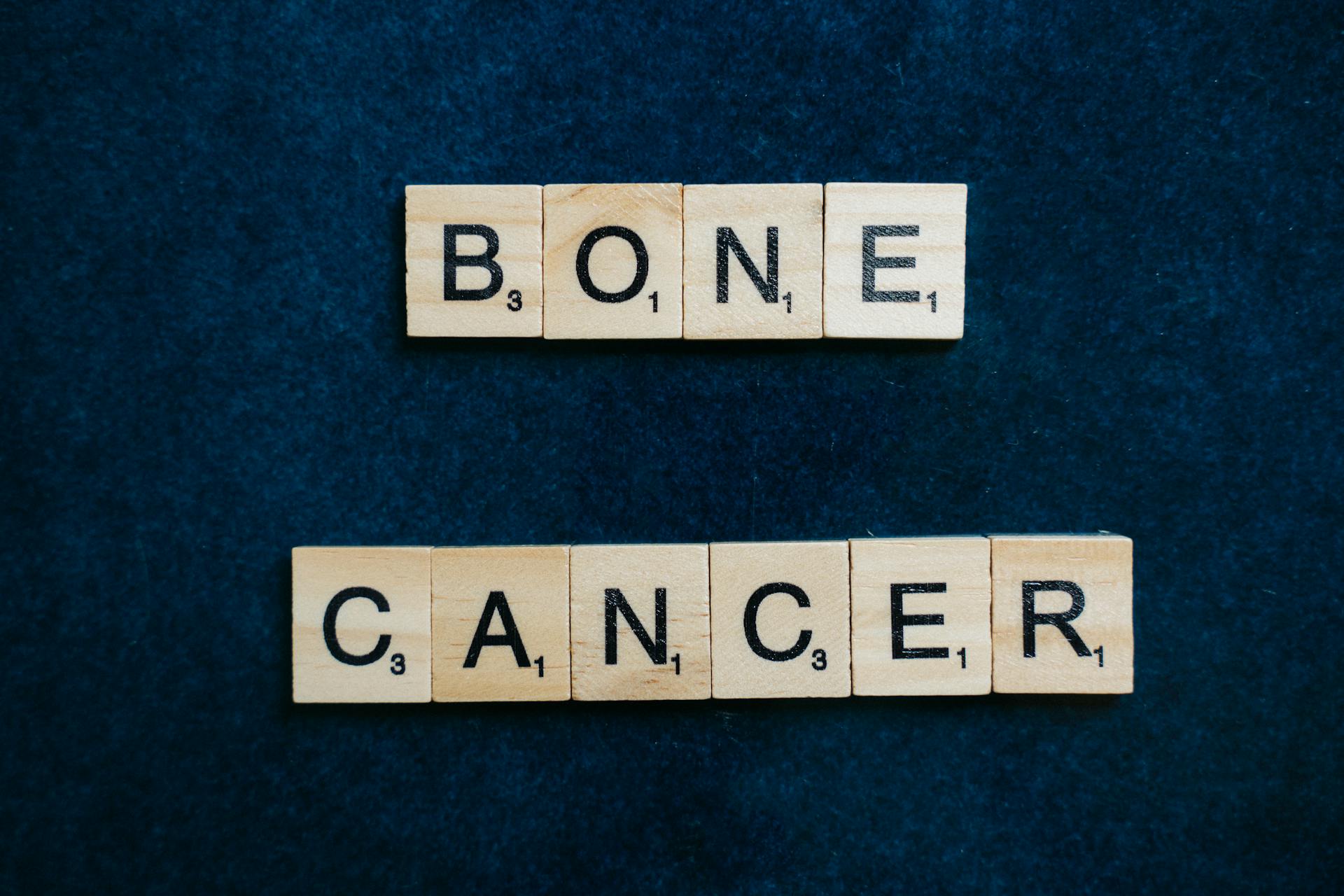
Spontaneous osteonecrosis is a rare entity in the maxillofacial region, with scarce literature data available.
It can be reported under various names, such as “oral ulceration with bone sequestration”.
Lingual exostoses or prominent bone structures are suspected to be potential predisposing factors.
Treatment options for spontaneous osteonecrosis include both conservative and surgical approaches.
This condition is characterized by exposed bone in the maxillofacial region.
Some cases may be treated conservatively, while others may require surgical intervention.
Relevant Anatomy
The heart is a muscular organ that pumps blood throughout the body. It's located in the thoracic cavity, between the lungs.
The heart has four chambers: the right and left atria, and the right and left ventricles. The right atrium receives oxygen-depleted blood from the body, while the left atrium receives oxygen-rich blood from the lungs.
The ventricles are responsible for pumping blood out of the heart and into the circulatory system. The right ventricle pumps blood to the lungs to pick up oxygen, while the left ventricle pumps blood to the rest of the body.
Blood vessels, including arteries, veins, and capillaries, play a crucial role in transporting blood throughout the body.
Bisphosphonate-Related ONJ
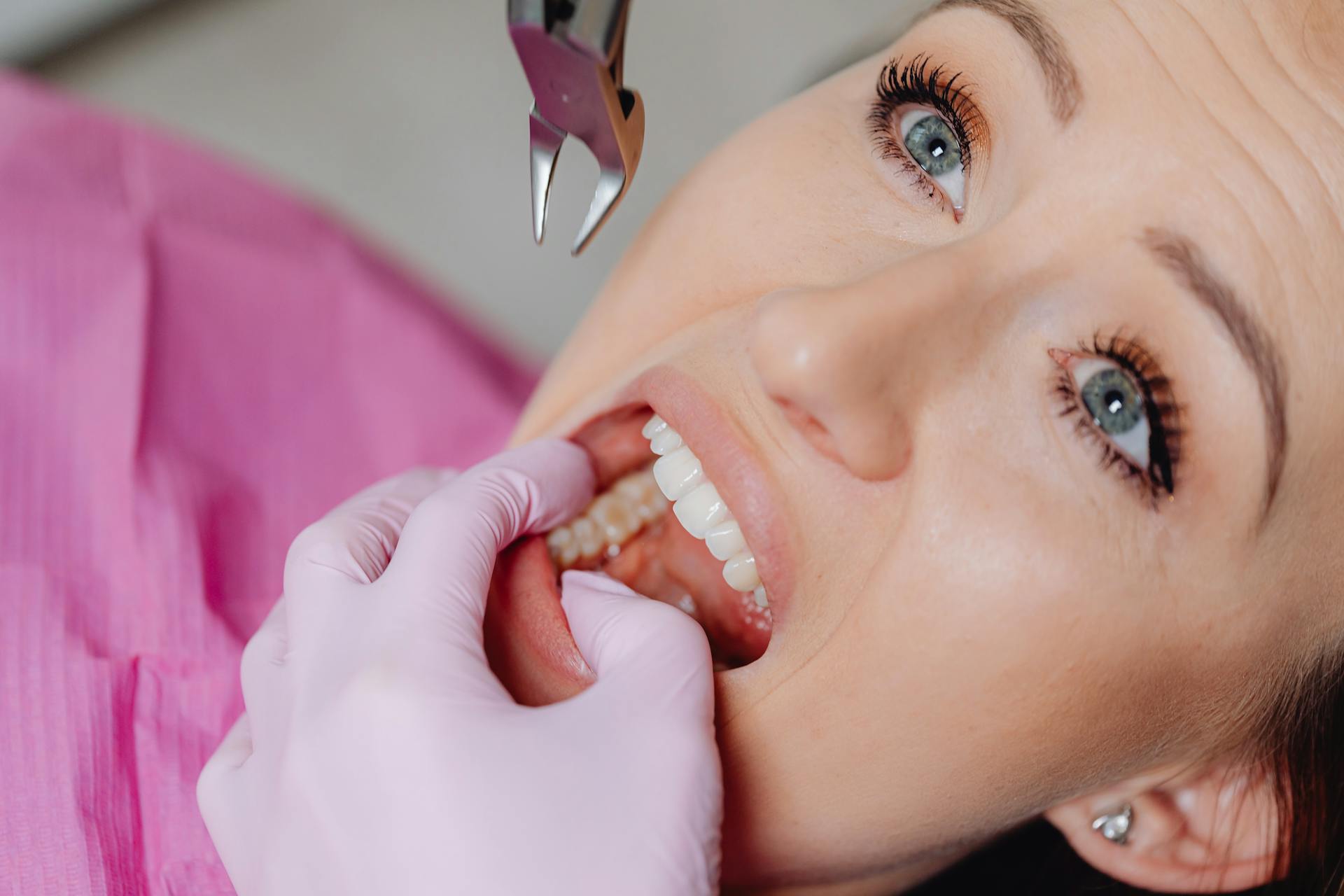
Bisphosphonates are a type of medication that can increase the risk of developing osteonecrosis of the jaw (ONJ). These medications are used to slow bone loss and increase bone strength, but they can disrupt natural bone healing, leading to ONJ.
Bisphosphonates are often prescribed for osteoporosis and certain types of cancer, and they can be administered orally or parenterally. Oral administration is less potent for causing ONJ compared to parenteral administration.
The main side effect of bisphosphonates is osteonecrosis of the jaw, which is also known as medication-related osteonecrosis of the jaw (MRONJ). This condition is characterized by the progressive destruction and death of bone in the jaw.
The risk of developing ONJ increases with age, and patients who are 65 or older are more likely to develop this condition. Other risk factors include chemotherapy, diabetes, gum disease, and smoking.
Symptoms of ONJ may include exposed bone in the mouth, pain, swelling, cellulitis, halitosis, trismus, and poor healing after dental surgery or tooth extraction. If you experience any of these symptoms, it's essential to seek medical attention promptly.
According to the American Association of Oral and Maxillofacial Surgeons (AAOMS), surgical débridement or resection is used in patients with stage III MRONJ. Nonsurgical management of MRONJ may consist of antimicrobial rinses, systemic antibiotics, systemic or topical antifungals, discontinuation of bisphosphonate therapy, and no dental therapy or minimally invasive dental therapy.
Here are some medications that can cause MRONJ:
- Bisphosphonates (oral or parenteral)
- Denosumab (a humanized monoclonal antibody targeting the modulation regulator)
- Bevacizumab (a humanized monoclonal antibody that selectively binds to human vascular endothelial growth factor)
- Sunitinib (a thyroxine kinase inhibitor)
It's essential to discuss the risks and benefits of bisphosphonate therapy with your doctor, especially if you have a history of gum disease or other oral health issues. Regular dental check-ups and good oral hygiene practices can help prevent ONJ and other oral health problems.
You might enjoy: Black Mouth Cur Health Problems
Frequently Asked Questions
How do you treat an exposed bone in your mouth?
Treatment for an exposed bone in the mouth typically involves using antiseptic mouth rinses, antibiotics, or minor surgical procedures to promote healing, and temporarily stopping antiresorptive medications if prescribed. Good oral hygiene practices are also crucial for preventing infection and promoting recovery.
Will gum grow over exposed bone?
Gums typically grow over exposed bone within one to two weeks after a tooth extraction, covering the socket and promoting healing. This natural process helps protect the area and supports the recovery of the surrounding tissue.
Sources
- https://my.clevelandclinic.org/health/diseases/24156-osteonecrosis-of-the-jaw
- https://www.ncbi.nlm.nih.gov/pmc/articles/PMC9858620/
- https://www.laifentech.com/blogs/news/how-to-deal-with-exposed-bone-after-tooth-extraction
- https://www.strulloralsurgery.com/understanding-osteonecrosis-of-the-jaw/
- https://emedicine.medscape.com/article/1447355-overview
Featured Images: pexels.com
